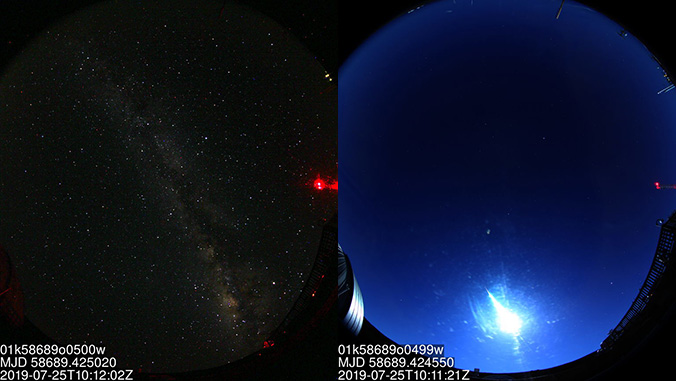
Hawaiʻi Island residents may have seen a flash in the sky on the night of July 24, and the University of Hawaiʻi ATLAS program on Mauna Loa caught an image of it. The meteor that briefly lit the sky brighter than the full moon was a rock estimated to be between the size of a softball and a basketball that disrupted in the Earth’s atmosphere.
The ATLAS program, sited at the NOAA facility on Mauna Loa, searches for hazardous asteroids, and its all-sky weather-monitoring camera captured the meteor during its routine monitoring of the night sky.
“They are scientifically interesting and visually spectacular but pose no threat whatsoever,” said ATLAS principal investigator Larry Denneau. “These occur over Hawaiʻi Island maybe once every few months, and around the world there are dozens per night.”
ATLAS (Asteroid Terrestrial-impact Last Alert System) is an asteroid impact early warning system operated by UH and funded by NASA, but that program is not designed to track meteoroids, which are harmless and too small to be detected prior to entering the atmosphere. ATLAS looks for hazardous asteroids that are big enough to do damage, things the size of a house or football field that are millions of miles away.
ATLAS, funded by NASA’s Planetary Defense Coordination Office, successfully pinpointed an incoming asteroid recently near Puerto Rico. Read more at the NASA Jet Propulsion Laboratory.
Capturing the July meteor flash was, as Denneau says, “serendipitous.”
“Our weather camera shutter is open for 30 seconds every exposure,” he said, “and the meteor lights up the entire sky.”

